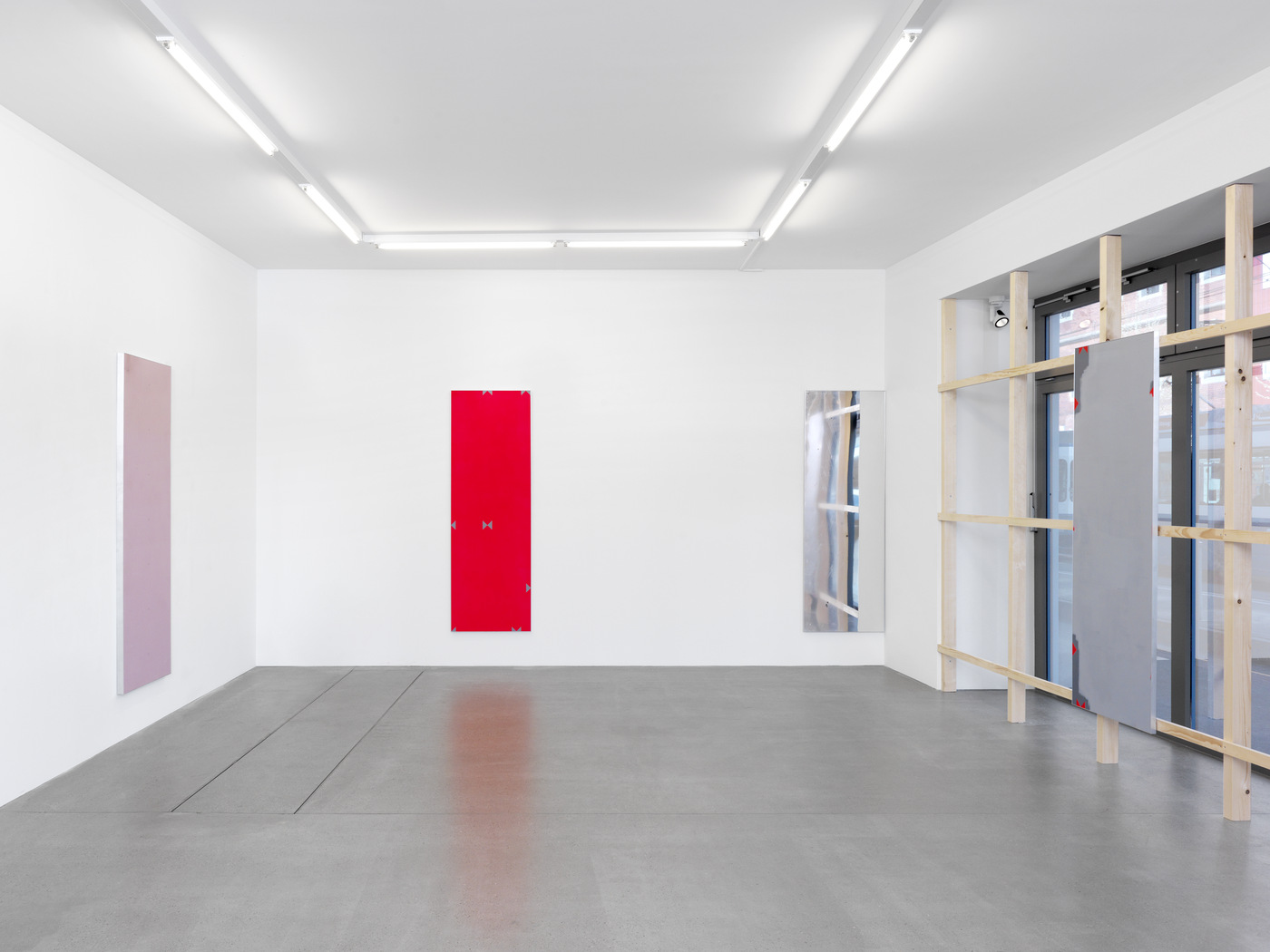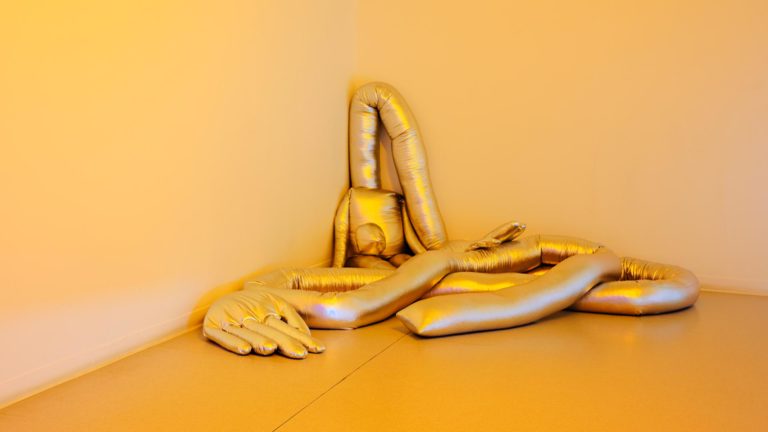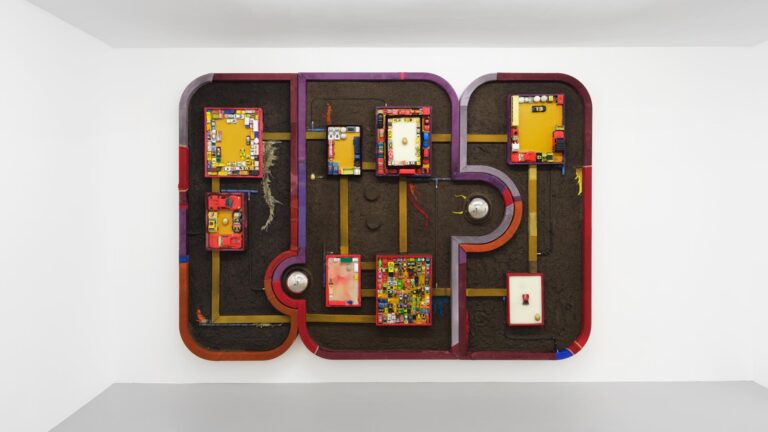Artist: Nick Oberthaler
Exhibition title: I CAN SEE THE WHOLE ROOM! …AND THERE IS NOBODY IN IT!
Venue: Galerie Maria Bernheim, Zurich, Switzerland
Date: April 15 – May 28, 2016
Photography: all images copyright and courtesy of the artist and Galerie Maria Bernheim, Zurich
“I can see the whole room! … And there is nobody in it!”
This is the title of the first exhibition in Switzerland of Austrian artist Nick Oberthaler (b. 1981 Bad Ischl, lives and works in Vienna).
The image on the invitation card recalls a speech bubble used in the work of pop artist Roy Lichtenstein, which Oberthaler has placed ontop of a black image without any pictorial context.
The title, the quoted speech bubble and thus the strategies made visible are true examples of Oberthaler’s conceptual paintings. His references as an artist are oscillating between a formal Kitsch and refined ambiguity, in an historical frame which keeps on questioning the duality of painting and words; but also the irony in the possibility of failures. Oberthaler’s paintings are an attempt to productively fail under the terms of art history, in the spirit of that romantic irony that Friedrich Schlegel defined as “constant change of self-creation and self-destruction”.
The title also references the conditioning of space as a central part of painting. We could read this as a sufficient description of pseudo sacred, nearly empty art space, whose effects have already been critically questioned, and a seductiveness that we refuse to elude. Oberthaler’s paintings are three-dimensional settings in the space that present themselves as objects. They are not illusionistic windows into a fictive reality nor ghostly interiorities, but clever attempts to fail at the image grid in a pseudo-modern endgame of self-limitations and amalgamated outbreaks. The frames are installed continuously in the room in a grid and thus bring a certain rhythm; which provides a certain contemporaneity and are supporting the comprehension of his paintings.
As often in his exhibitions, Oberthaler is displaying mirrors next to his paintings that are acting as comments on the work. The mirrors are bundling and are providing the works with a narcissistic energy of the maker as well as the collector conveying apparent self-references, which are both physical and spatial. The discarding of the beholder’s own body, exaggerated by the presence of the reflective foils, taken from Oberthaler’s man-sized dimension paintings (180x60cm) is forcing the viewer to perceive his body in relation to the image, locating it in the concrete space and thus making him an actor in the installation. The foil that Oberthaler applies to the windows expands this game in the static space: it lures the visitor in through the vision of the inside which doubles itself in the view from the outside. By boldly pressing one’s nose onto the windows, one can understand the title of the exhibition and recognized the space in which the human form is no longer recognisable. In an artistic gesture, the mirrored foil is simultaneously an invitation and an exclusion.
Text by Martin Jaeggi
Nick Oberthaler, Untitled, 2016
Nick Oberthaler, Untitled (Eventuality I), 2016
Nick Oberthaler, Untitled, 2016
Nick Oberthaler, Untitled (Eventuality II), 2016
Nick Oberthaler, Untitled (Austerities), 2016
Nick Oberthaler, Untitled (State of Conformity), 2016
Nick Oberthaler, I CAN SEE THE WHOLE ROOM! …AND THERE’S NOBODY IN IT!, 2016
Nick Oberthaler, Untitled (Eventuality III), 2016
Nick Oberthaler, Untitled, 2016
Nick Oberthaler, Untitled, 2016
Nick Oberthaler, Untitled, 2016
Nick Oberthaler, Untitled, 2016
Nick Oberthaler, Untitled (Slice), 2016
Nick Oberthaler, Untitled (Espèces d’Espaces), 2016





























